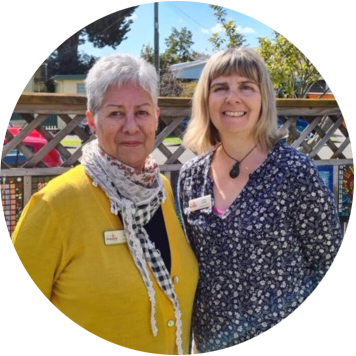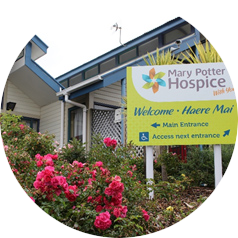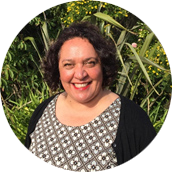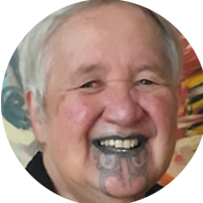-
For Whānau Manaaki Family Caregivers
- Kete Aronui Maori Palliative Care A site for whānau manaaki, family caregivers
- Te Ipu Aronui Road Map
- Kete Tuauri
- Spirituality and wairua
- Karakia definition
- Diverse spiritual faiths and practices
- Spiritual safety and protection
- Spiritual care within hospitals, hospices and aged residential care services
- The power of karakia
- Spiritual support at time of death
- What if you do not know your spiritual care customs?
- Kete Aronui - rongoā
- Rongoā healing
- Forms of rongoā
- Use of rongoā rākau (natural plant medicines) is increasing
- Are you thinking about using rongoā?
- Include your rongoā healer in your health care team
- Self-care
- Te Ipu Aronui’s Kete Tuauri
- Staying with the tūpāpaku
- Karakia before and after death
- Preparing the tūpāpaku (body)
- Caring for the tūpāpaku (body) after death
- Planning and preparation for care following death
- Whakanoa (spiritual clearing of environment process)
-
For Health Professionals
- Whanaungatanga - Establishing a relationship
- Connections take time
- First contact - building a rapport
- Rich histories and lifestyles
- Building trusting relationships
- Whānau systems of care Care roles within whānau
- Geographical location and end of life care
- Challenges whānau face
- Cultural safety - more effective than cultural competency
- Cultural safety - a definition
- Māori health and palliative care workforce
- Strengthening Māori cultural safety
- Caring for Māori health professionals
- Tikanga
- Ngākau pono Working with a sincere heart
- Caring with aroha
- Self-care
- Te Reo Māori The Māori language
- New Zealand history
- Kaumātua tino rangatiratanga Independence, authority
- Places kaumātua are cared for
- Dying in a healthcare setting
- Living in a ‘home’
-
Pae Herenga Research Background
- Healthcare providers
- Palliative care resources
- Support services
- Grief and loss support
- Research
- Tangihanga and funerals
- Links and Information for Health Professionals
- Te Reo Māori Resources
- Cultural Safety
- New Zealand History
- Pūrākau
- Advanced Care Planning (ACP)
- Medicines Directory
- Publications
- Māori Data Sovereignty
- Covid 19 Study
Whānau Stories
Digital storytelling
Māori caregiving values
In the Māori creation story, Tāne’s quest was to ascend the heavenly realms to retrieve three baskets of knowledge to help humankind. The third kete (basket) he retrieved was ‘Kete Aronui.’ This kete contained all manner of practical knowledge to help humans live well and prosper on earth. Kete Aronui kete contains helpful tikanga and kawa that are woven together by whanonga pono (values). Each whānau ‘kete’ contains specific values that guide and support the family to provide care to someone who is ill and dying; each kete includes their expressions of love, emotional, physical, practical, financial and spiritual support.
This page is dedicated to highlighting some information about whanonga pono (values) to support whānau to provide care to an adult or kaumātua at the end of their life. The information is based on the Pae Herenga study findings. Kaumātua advisors from the Te Ārai Palliative Care and End of Life Research Group, School of Nursing, University of Auckland support our recommendations.
Ten Whanonga Pono (values)
Many whanonga pono and principles underpin tikanga and influence how whānau care for their kaumātua. We found 10 whanonga pono that emerged when we analysed pūrākau from whānau who took part in an interview in the Pae Herenga study; these values form the threads of Kete Aronui. Collectively these values show the importance and mana (authority, status) of whānau in the end of life caregiving system. We briefly describe these values below - they are not listed in any order or importance as each value has its own merits and is interconnected and reliant on the others. These 10 whanonga pono are supported by pūrākau videos (stories) provided by Pae Herenga study participants and pilot study participants.
1. Aroha - Compassion, empathy, care
End of life is a time where whānau provide care filled with love, empathy compassion, understanding and patience. This produces a powerful healing energy vibration that fortifies whānau to care for their kaumātua. Some great examples of aroha are demonstrated in Cess and Fin’s pūrākau (stories) (Pae Herenga study participants’), and also Kiripai’s story (Pilot study participant).
Reflecting on the value of ‘aroha’, Cess’ story ‘A soldiers farewell’ provides a good example of how whānau take care of their kaumātua at the end of life.
‘A soldier’s farewell’ by Cecily Miller-Heperi
‘Kōtiro, promise me you won’t stick me in an elderly home.’ ‘I promise dad.’
Reflecting on the value of 'aroha’, Fin’s story 'Hey Moko' provides a good example of how whānau place their kaumātua at the centre when they are māuiui.
‘Hey Moko’ by Finley Johnson
Reflecting on the value of ‘aroha’, Kiripai’s story ‘He Whaea o te Ao’ provides a good example of how important it was to her to care for her mother, in just the right way, when she was māuiui.
‘He Whaea o te Ao’ by Kiripai Kaka
Kiripai's digital story has a commentary provided by Tess
Stella: So, Tess what do you think we can learn from Whaea Kiripai’s story?
Tess: Well feeding someone when they’re unwell is a very um I think sacred ritual and it involves kairangatira, or ah food for the esteemed. And in terms of caregiving, this is a particular role that some people in a whānau hold, and in this story, it was Whaea Kiripai’s right to hold that. And food for the esteemed ah, is usually anything from seafood to ah the particular porridge that she’s talking about there or it could be rotten corn, mutton bird anything like that. But also, it’s a story about grief because Whaea Kiripai talked about how she um really felt the pain of her mother not being able to enjoy these ah beautiful foods that she herself had given the community. And so, I think it also highlights that grieving happens throughout the ah illness to death’s journey and not just when someone dies.
Stella: So, what do you think health professionals can learn from this story?
Tess: Well I think health professionals can learn that we, and appreciate that we, enjoy kairangatira; that it’s important to uplift the mauri of a person when they’re unwell. It might not be a huge meal, it might just be a little taste, but these foods are associated with memories of our past, our ancestors, our lands and our families and being compassionate and understanding about our need to have these foods in a hospital setting or a hospice setting or any other place where we might need care of health professionals is an important contribution they could make to making whānau feel safe and secure.
2. Whanaungatanga – Relationships and connections
End of life care activities are relational. Caregiving takes place within a whānau care system; caring involves every member of the whānau. Everyone has something they can contribute. Caring means sharing! Good connections and strong relationships help to spread the end of life care privilege and responsibility. Each whānau member has a role, or multiple roles to play in caring for a kaumātua. Even children have a role to play as their presence can help to uplift the spirit of a kaumātua. Some lovely examples of these connections are shown in Marilyn and Kim’s stories (Pae Herenga study participants), and Red’s pūrākau (Pilot study participant).
Reflecting on the value of ‘whanaungatanga’, Marilyn’s story ‘Oma’ highlights how the connections whānau have with their kaumātua at the end of life is essential to good end of life care.
'Oma’ by Marilyn Vreede
Reflecting on the value of ‘whanaungatanga’, Kim’s story ‘Love is the key’ shows how the connections her whānau had with their kaumātua enabled them to provide wrap around care of her father at the end of his life.
‘Love is the key’ by Kim Steffert
Reflecting on the value of ‘whanaungatanga’, Red’s story ‘The lucky ones' shows how the connections his whānau had with their kuia meant they could enjoy having her in their lives, while they cared for her, at the end of her life.
‘The lucky ones’ by Red Henare
Red's digital story has a commentary provided by Tess
Stella: In our mahi Tess, we don’t often here the tāne or the male perspectives in the whānau caregiving stories. What did you think about Red’s story?
Tess: Oh, I thought it was awesome and I think it was really cool that we had a male speaking about his caring relationship. And I think men do a lot to care, we just perhaps don’t always hear about it. And often we ah hear that our tāne take charge of karakia and um they’ll take a leadership role in organising things and what not, but in Red’s case, like many of our men, he washed dishes, he cleaned the kids and he supported his partner to provide that frontline care. And that is so important because somebody has to be standing there and, you know, helping to run the whānau at that time. And I think the other thing that’s really awesome about his story is that um, Red never pathologizes ah his mother-in-law. He never talks about her dementia as a problem or, he doesn’t identify her with that at all. He adores her and she adores him, and that’s the story that he wants us to know and I think that’s amazing.
Stella: Yeah that’s true, I agree. He and the whānau all showed a lot of aroha and respect for her. Um would you say that’s key in this story?
Tess: I think we can all learn something from that ah. Look, look to the person and ah treat the person as a person and not as their illness, yes kia ora.
3. Whakapapa – Genealogy
End of life is a time when kaumātua are preparing themselves to cross the ārai (veil). They will return to their spiritual origins to be embraced by Io Matua Kore (Supreme Creator) and will be reconnected with their ancestors. Kaumātua are valued and respected in relation to their whakapapa (genealogical connections), tūpuna connections and ancestral histories. Everyone has a whakapapa, and everyone comes with his or her own personal life story, which is also a type of whakapapa. Not all life stories are easy and not everyone has a large whānau to care for them at end of life, but most kaumātua will have someone in their whānau to help them. Health professionals can provide valuable support. See a good example of this in Vanessa’s story (Pae Herenga study participant).
Reflecting on the value of ‘whakapapa’, Vanessa’s story ‘It takes a village’ shows how health professionals who see themselves as part of the extended whānau in the end of life care system, can support kaumātua at the end of their lives.
‘It takes a village’ by Vanessa Eldridge
4. Whenua – Land
Whānau respect the relationships kaumātua have with their whenua (lands), ancestral homes and those places where they feel most emotionally and spiritually connected. Good end of life care honours these connections with important ancestral spaces and places. Sometimes, before they die, kaumātua need to visit their ancestral homes and be with the people who live there, as well as their maunga (mountains), ngāhere (forests), awa (rivers), moana (oceans), marae (gathering places), urupā (gravesites) and whenua (lands) as this helps to calm and fortify them for what lies ahead. Knowing they have planned where their tangihanga (funeral customs) will take place and what urupā (gravesite) they will be buried in, can lift a huge weight of their shoulders. This lifts some of the organisational responsibility off whānau. An important example of this in Abigail and Ivy-Lee’s story (Pae Herenga study participants), and Eliza’s story (Pilot study participant).
Reflecting on the value of ‘whenua’, Abigail and Ivy-Lee’s story ‘Te karanga o tōku Pāpā’ highlights the connection their father had to his whenua as how they helped him to return to his ancestral lands, home and people, at the end of his life.
'Te karanga o tōku Pāpā’ by Abigail Kaiawe & Ivy-Lee Topia
Reflecting on the value of ‘whenua’, Eliza’s pūrākau, ‘Māmā’ highlights the connection her mother had to a specific landscape in the North Island of New Zealand. Eliza and her whānau made their mother’s dream come true by taking her there to visit.
‘Māmā’ by Eliza Tepania-Carter
5. Kotahitanga - Agreement and cohesiveness
End of life care requires many conversations among whānau who plan and prepare for days, weeks, months and sometimes years ahead (as with dementia care, for example). The goal is to reach an agreement on what is needed and what will produce the best outcomes for kaumātua and their whānau. Sometimes one family member takes leadership and helps to organise their whānau. This can be particularly helpful when the person has knowledge of the health care system and a high level of health literacy (being able to obtain, understand and apply important health information); they bring this together with their tikanga (customs) to inform their planning and care preparations. A great example of this can be viewed in Manaaki’s story (Pilot study participant).
Reflecting on the value of ‘kotahitanga’, Manaaki’s pūrākau, ‘Remember you always,’ highlights the importance of leadership in carrying out end of life care. This digital story has added commentary by the researchers at the end.
‘Remember you always’ by Manaaki Poto
Care needs will change as life unfolds and the older person’s health declines. Discussions and decision making often involve living arrangements, caregiving at home, hospital, hospice or Aged Residential Care involvement, personal cares, pain and symptom management, medical treatments, care of other dependents (such as arranging care for any mokopuna the kaumātua may be raising), tangihanga arrangements and legal matters. Consensus is reached when everyone is satisfied with the decisions made. Conversations take place between the kaumātua and their whānau, and discussions can include health providers who can also become part of the broader whānau end of life care system. See an example of good communication in Anita’s story (Pae Herenga study participant).
Reflecting on the value of ‘kotahitanga’, Anita’s pūrākau ‘Hoki whakamuri’ describes the importance of communication at end of life. Good communication helps her to help kaumātua receive the support they need in her community role as a hospice kaitakawaenga.
‘Hoki whakamuri’ by Anita Rarere
6. Kaitiakitanga - Guardianship, leadership of carers
When you are part of a whānau, there is a collective responsibility to support kaumātua when they need it. It is common for kaumātua to give someone in their whānau speaking rights to speak on their behalf when they are no longer able to speak for themselves. This advocacy position can be very helpful as the kaitiaki (person who provides the leadership/spokesperson support) can carry out the wishes (including cultural obligations) of the kaumātua. The kaitiaki has a useful role in being able to hapahapai (advocate, champion, promote) on behalf of their kaumātua, by speaking up to health professionals. Some whānau may have more than one spokesperson and they may have spokespeople for different things (medical, cultural, legal). Sometimes these roles might be formalised legally, for example, an Enduring Power of Attorney assumes legal protection of the kaumātua. A strong example of kaitiakitanga (leadership) is highlighted in Tiana’s story (Pae Herenga study participant).
Reflecting on the value of ‘kaitiakitanga’, Tiana’s pūrākau ‘My light’ describes how she uses her advocacy to speak on behalf of, and care for her mother.
‘My light’ by Tiana Wharawhara
7. Manaakitanga - Care reciprocity
End of life is the time whānau give back to kaumātua. There is a recognition that kaumātua have cared for their whānau throughout their lives and now they need this aroha and support returned. It is an opportunity for the whānau to care for them. The older person’s community has a role to play in supporting this based on the status the kaumātua has as a rangatira (respected leader) and elder within their community. See some good examples of manaakitanga in Jonine’s and Stella’s stories (Pilot study participants).
Reflecting on the value of ‘Manaakitanga’, Jonine’s pūrākau, ‘My mum’ describes how she provided 24/7 care for her mother at the end of her life. This story also includes some feedback from the researchers.
‘My mum’ by Jonine Nepia
Reflecting on the value of ‘Manaakitanga’, Stella’s pūrākau, ‘Stella’s caregiving story’ describes how she provided 24/7 care for her father at the end of her life despite the challenges of tiredness and other commitments, nevertheless the kaumātua and caring for his mana were placed at the centre of their love and care. This story also includes some feedback from the researchers.
‘Stella’s caregiving story’ by Stella Black
8. Rangatiratanga – Respecting the autonomy and independence of kaumātua
End of life care means that whānau have a role in protecting the self-determination and self-management of kaumātua. Whānau will try to ensure the older person’s independence to live and die how they want is respected and protected until they take their last breath. Kaumātua are often very independent and can resent people taking away their ability to do things for themselves. Some kaumātua may feel the need to protect their whānau from taking on a caregiving role, as they know their whānau are busy, financially under pressure and perhaps they may live some distance from them. Whānau can find ways to discuss these issues so they can support and help their kaumātua while still protecting their end of life care preferences. See an example of this in Devi-Ann’s story (Pilot study participant) where her brother George used his autonomy to organise his own tangihanga.
Reflecting on the value of ‘Rangatiratanga’, Devi-Ann’s pūrākau, ‘Our brother George’ describes how her brother exercised his independence at the end of his life, with his family’s support. This included making plans for his own tangihanga (funeral). This story also includes some feedback from the researchers.
‘Our brother George’ by Devi-Ann Hall
End of life care means that whānau have the privilege and obligation to uphold the status, authority and prestige of their kaumātua by caring for them 24 hours a day, particularly when they are close to dying. This includes protecting kaumātua from any form of harm during this phase of their lives as this is a time when they could be feeling physically, financially, socially, emotionally and spiritually vulnerable. Whānau try to protect their kaumātua by ensuring that they are not put in compromising situations physically, emotionally or spiritually. They focus on uplifting the mana of kaumātua and do what they can to help them feel as comfortable as possible at all times. See Coline’s story (Pae Herenga participant) highlighting how she cares for her father.
Reflecting on the value of ‘Manaakitanga’, Coline’s pūrākau, ‘Our story’ describes how she used her aroha to care for, and protect, her father by providing him with the best home-based care she could at the end of his life.
‘Our story’ by Coline Hape
9. Ngā tuku ihotanga tūpuna - Ancestors bequest
End of life is a time when the traditional caregiving values and practices (tikanga and kawa) that have been handed down by tūpuna (ancestors), that kaumātua are familiar with, are actioned. Through their practical application, this cultural knowledge is transmitted (passed down) to their whānau. These tikanga can be role-modelled by kaumātua themselves as they demonstrate or teach their whānau how they want to be cared for and what tikanga (customs) need to be carried out to their satisfaction. This might involve instructions on how to prepare food in a particular way, it might involve the types of rongoā rākau (plant medicines) kaumātua want made into a pani (balm) and rubbed on their skin, or a specific karakia (prayer) they want said when they die. See Pae Herenga participants’ Rawi and Ngawati’s pūrākau and also Ned’s story, highlighting how they use their cultural knowledge of rongoā to care for kaumātua and whānau.
Reflecting on the value of ‘Ngā tuku ihotanga tūpuna’, Rawi and Ngawati’s pūrākau, 'Rongoā Māori Medicine’ describes how they use their knowledge of rongoā Māori (natural healing) and their practitioner skills, to bring comfort to ill kaumātua and their whānau who care for them.
‘Rongoā Māori medicine’ by Rawi Pere & Ngawati Heihei
Reflecting on the value of ‘Ngā tuku ihotanga tūpuna’, Ned & Jane’s pūrākau, ‘Peita – Pae Herenga’ describes how Ned, and some of his rongoā practitioner friends, used the knowledge of Māori plant medicines that was passed down to them by their tūpuna, to care for his mother when she was nearing death.
‘Peita – Pae Herenga’ by Ned and Jane Peita
10. Wairuatanga – Spirituality & Rongoā
End of life care means caring for the spiritual health and well-being of the kaumātua and their caregiving whānau. Rongoā (treatments, remedies, solutions [to a problem]) is a spiritual healing system that helps to bring comfort by petitioning traditional or contemporary Atua (for example, Io Matua Kore, God, Jesus, Supreme Creator and Divinities) in reducing emotional and physical pain and symptoms. Rongoā includes a broad range of healing approaches. It can include any form of healing support that is generated and extended by Atua; its primary goal is to bring comfort and protection, and to clear negative or blocked energies. Rongoā lightens the emotional, mental, physical, spiritual energy, symptoms and pain of people and environments. The healing energy seeks to uplift and heal everything, and everyone involved in end of life care. The practice of rongoā can include, but is not limited to, karakia (prayers, incantations, chants), waiata (singing), karanga (calling), whaikōrero (speechmaking), hui (gatherings), rongoā rākau (plant medicines), mirimiri (massage), romiromi (deep tissue massage) and matakitetanga (prophecy, clairvoyance and mediumship). The use of humour is also an important rongoā that can help to lift and clear energy and raise the mauri (energy life force). See Pae Herenga study participant Huriana’s story which highlights the healing power of humour, and participants’ Arena and also John and Heather’s pūrākau on spiritual care.
Reflecting on the value of ‘Wairuatanga and rongoā’, Huriana’s pūrākau, ‘Just being there' describes how she provided care to her uncle at the end of her life. The use of humour is a great asset when caring for kaumātua.
‘Just being there’ by Huriana Henderson
Reflecting on the value of ‘Wairuatanga’, Arena and Hana’s pūrākau, ‘Hāpai te oranga’ describes how Arena provides spiritual care to people at the end of their life to make them ‘comfortable.’
‘Hāpai te oranga’ by Arena and Hana Munro
Reflecting on the value of ‘Wairuatanga’, Heather and John’s pūrākau, ‘Listening’ describes how they provide spiritual care to kaumātua at the end of their lives by listening to people and helping them to fulfil their wishes and complete their affairs before they leave.
‘Listening’ by Heather and John Flavell
There are many different forms of rongoā, and kaumātua and whānau may have specific preferences for particular rongoā they like. See Mary’s (Pae Herenga participant’s) story. Some religious faiths do not permit the use of rongoā, but it is up to each kaumātua and whānau to determine what is right for their kaumātua. Increasingly more kaumātua and whānau are using, or wanting to use rongoā support, particularly rongoā rākau as they know it can be very beneficial to them. See Pae Herenga study participants’ Ned’s story shown previously.
Reflecting on the value of ‘Rongoā’, Mary’s pūrākau, ‘I am rongoā’ provides a heartfelt and personal reflection on what rongoā is and what it means to be a matakite and rongoā healer for her.
‘I am rongoā’ by Mary Bennett



